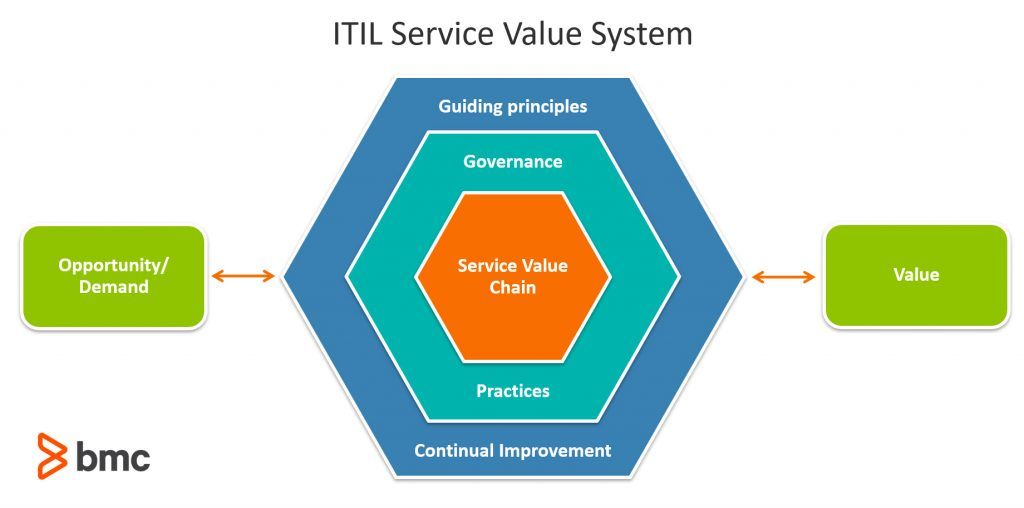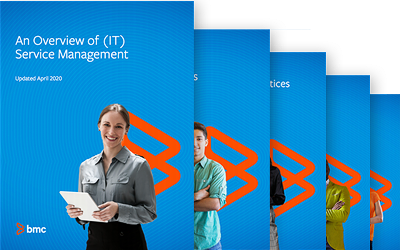Organizations maximize co-creation of value with their customers by facilitating the outcomes they want to achieve. The four dimensions of service management have shown that a holistic approach is the best way for an organization to meet its goals in delivering quality and cost effective services, which meet the needs of its customers, and satisfy the requirements of its stakeholders.
Download Now: ITIL 4 Best Practice e-Books
These all-new for 2020 ITIL e-books highlight important elements of ITIL 4 best practices. Quickly understand key changes and actionable concepts, written by ITIL 4 contributors.
In order to function properly, an organization’s service management elements need to work together as a system. ITIL 4 has introduced the Service Value System (SVS), to ensure that the organization constantly co-creates value with all stakeholders through the use and management of products and services. The ITIL SVS describes how all the components and activities of the organization work together as a system to enable value creation.
So what is in the ITIL SVS? It is made up of specific inputs, elements and outputs relevant to service management. The key inputs to the SVS are opportunity and demand, while the output of the SVS is value delivered by products and services. Opportunity refers to options or possibilities to add value for stakeholders or otherwise improve the organization. Demand refers to need or desire for products and services among internal and external consumers. Opportunity and demand trigger activities within the ITIL SVS, and these activities lead to the creation of value. Opportunity and demand are always entering into the system, but the organization does not automatically accept all opportunities or satisfy all demand.
The structure of the SVS is shown in the diagram below.

The 5 elements which support the transformation of demand into valuable outcomes are defined as follows:
| SVS Element | Definition |
| Guiding Principles | Recommendations that can guide an organization in all circumstances, regardless of changes in its goals, strategies, type of work, or management structure |
| Governance | The means by which an organization is directed and controlled |
| Service Value Chain | A set of interconnected activities that an organization performs to deliver a valuable product or service to its consumers and to facilitate value realization |
| Practices | Sets of organizational resources designed for performing work or accomplishing an objective |
| Continual Improvement | A recurring organizational activity performed at all levels to ensure that an organization’s performance continually meets stakeholders’ expectations |
In the next series of articles, we will look at each SVS element in detail. Note that the architecture of the ITIL SVS specifically enables flexibility and discourages siloed working. This is because the service value chain and practices do not form a fixed, rigid structure, but rather they can be combined in multiple value streams to address the needs of the organization in a variety of scenarios, with open flow of communication across the many interfaces. This is contrary to siloed working where organizational hierarchies and constrained communication flow limit collaboration, reduce efficiency and increase both cost and risk.
Through its flexible value-oriented operating model, the ITIL SVS supports many work approaches, from traditional processes and project management practices (waterfall methodology) to more modern practices such as Agile, DevOps, and Lean. The SVS is not limited by size of the organization whether it be a department, startup, small business or multinational. However, to attain full value and limit the negative impacts of silos, it is recommended that the SVS is applied across the entire organization rather than a subset.
In service management, the success of an organization can be determined by two key capabilities:
- Organizational agility: The ability of an organization to move and adapt quickly, flexibly, and decisively to support internal changes e.g. organizational structure changes, technology changes, skill changes etc.
- Organizational resilience: The ability of an organization to anticipate, prepare for, respond to, and adapt to both incremental changes and sudden disruptions from an external perspective i.e. PESTEL factors.
The ITIL SVS provides the means to achieve organizational agility and resilience and to facilitate the adoption of a strong unified direction, focused on value, and understood by everyone in the organization, while also enabling continual improvement throughout the organization.
ITIL® is a registered trade mark of AXELOS Limited. IT Infrastructure Library® is a registered trade mark of AXELOS Limited.








